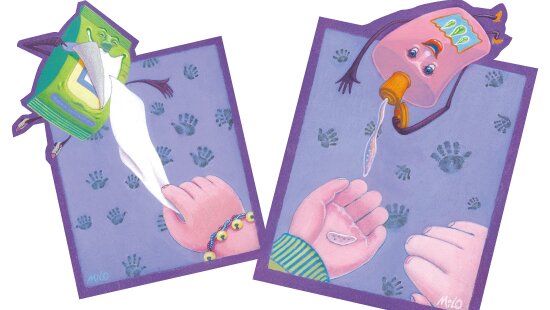The raids of various infectious diseases in recent years and the sporadic cases of Middle East Respiratory Syndrome (MERS) outbreaks overseas have once again alerted Hong Kong people to the importance of washing their hands frequently and maintaining hand hygiene, no matter in Hong Kong or overseas. The market of alcohol-based hand rubs and disinfecting wet towels has become flourishing. The products are claimed to be effective in acting against infection and preventing contagion. Are their claims trustful?
After examining samples of 15 antiseptic hand rub and 22 wet towel products available in the market, the Consumer Council found that the labelling on the product package needs to be greatly improved. The use of terms and completeness of the list of ingredients are not consistent. Some labels are in Chinese while some only in English or other foreign languages, some indicates types of ingredients with quantities and some without. Consumers will find it difficult to understand and assess effectiveness of the products.
While all the product samples have various claims regarding cleaning, disinfecting and bacteriostatic effectiveness on the labelling, for example "99.9% bacterial killing", "eliminates 99.9% of germs", only suppliers of 17 of them have provided the Council with relevant test reports to support the types of micro-organisms that the products are able to act against. For those which had not provided test reports, it is doubtful whether the claim of "killing 99.9% of germs" can be substantiated. It is difficult for consumers to learn simply from the labelling the sterile efficacy of the products.
Since antiseptic hand rubs and wet towels are basically not pharmaceutical products, they are not regulated by the Pharmacy and Poisons Ordinance.
The major disinfectant ingredients in antiseptic hand rub and wet towels found in the market usually are: alcohol, quaternary ammonium compounds, chlorhexidine and triclosan. Some products contain more than one of these ingredients.
Alcohol has a long history of being used as a disinfectant. According to the World Health Organization, alcohol sanitizers demonstrate the best disinfecting effect in a concentration around 60% to 80%. However, it may become less effective if the alcohol concentration is too high. Besides, alcohol does not have a persistent effect, and is not very effective against parasites and bacterial spores.
Of all the samples, 13 hand rubs and 8 wet towels were indicated to be alcohol-based, of which 4 hand rubs have an indicated concentration of 60% to 70% and 6 towels have an indicated concentration of 25% to 75%.
Overuse of alcohol-based hand rubs may make skin dry by losing sebum and water. Some foreign studies indicate that washing hand with products containing moisturizing ingredients such as glycerol do not make skin as dry as rinsing with liquid soap and water. Consumers should therefore stop using alcohol-based hand rubs and seek medical advice if they suffer from itchy hands, rashes or inflammation after using them. Some products with perfumes or additives may also cause allergic reactions.
Products containing quaternary ammonium compounds or other compounds are bacteriostatic and fungistatic more persistent antibacterial effect, though their disinfection efficacy is no match for alcohol. However, it is less likely for them to cause skin allergy.
Some foreign studies indicated that triclosan may interfere with hormone secretion and fuel tumor growth in animal body. According to information of the US Food and Drug Administration and European Commission's Scientific Committee on Consumer Safety, there is as yet no evidence to show that it is hazardous to humans. Consumers are however, advised to cautiously and reasonably use triclosan-based products. In case any chlorhexidine-based product comes into contact with the eyes, it may result in conjunctivitis or corneal injury.
Some hand sanitizers carry claims that they contain "natural" disinfecting ingredients. But since there is still not substantial evidence about the disinfection efficacy of substances like melaleuca alternifolia and thyme, they still cannot replace alcohol-based hand rub for the time being. Consumer should also be alerted that products with "natural" ingredients may also cause allergic reactions.
Keeping your hands clean and hygienic is an essential way to stay away from infectious diseases. Consumers can consider the following suggestions:
- Clean your hand thoroughly with liquid soap to maintain optimal hand hygiene.
- If hand-washing is not feasible, apply a palmful of alcohol-based hand rubs to cover all your hand surfaces, and scrub your hands for about 20 seconds until they totally dry off.
- When using alcohol-based wet towel, wipe every part of your hands for disinfecting effect.
- Since alcohol is flammable, it should be kept away from heat sources, stored with seal at a cool place and kept out of the reach of children.
- When allergic reaction occurs, stop using the product and seek medical advice in severe cases.
- Keep alcohol-based hand rubs and wet towels away from your face, mouth and eyes.
The Consumer Council reserves all its right (including copyright) in respect of CHOICE magazine and Online CHOICE ( https://echoice.consumer.org.hk/ ).



